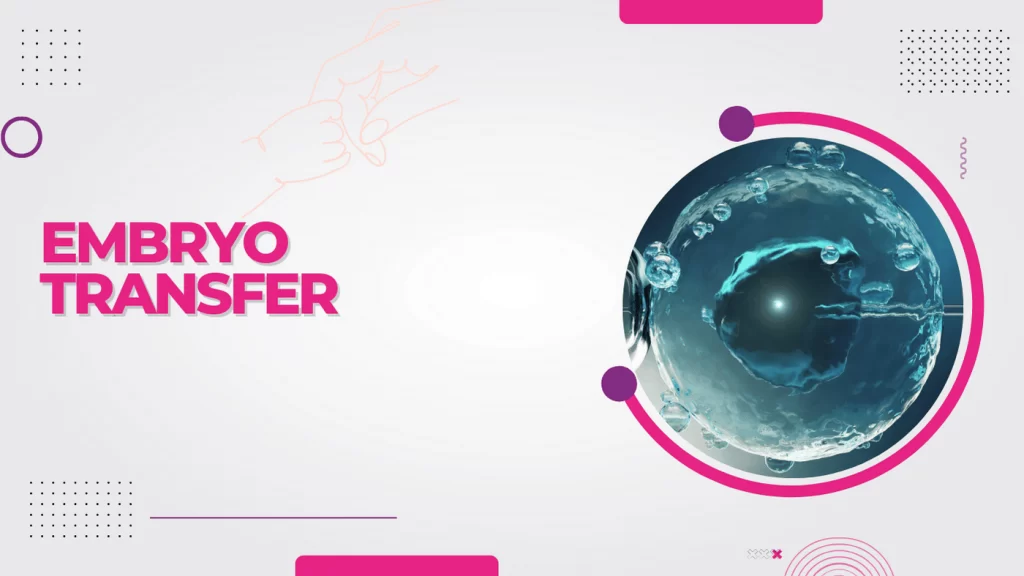
Embryo transfer is a simple procedure that follows in vitro fertilization (IVF) and is often considered the simplest and final step of the in vitro fertilization process. The objective of embryo transfer is to facilitate conception following fertilization and embryo development from the in vitro fertilization procedure.
Embryos are generally transferred to the woman’s uterus at the 6 -8 cell stage which are day 3 stage embryos. Embryos may be transferred anytime between day 1 through day 6 after the retrieval of the egg, although it is usually between days 3-5. Some clinics are now allowing the embryo to reach blastocysts stage before transferring, which occurs around day 5 which has higher chances of pregnancy.
There are two types of embryo transfer, fresh embryo transfer and frozen embryo transfer.
- Fresh embryo transfer: Is generally done 3 to 5 days after the egg retrieval procedure where the embryos are transferred into the womb without freezing them. This can only be done if the patient is suitable for fresh transfer based on her hormonal levels and other factors.
- Frozen embryo transfer: Is commonly done during IVF so as to increase the chances of pregnancy by creating a more suitable hormonal milieu. Here embryos are frozen on day 3 or day 5 stage after IVF procedure which are later thawed and transferred in to uterus to achieve pregnancy. With current vitrification techniques, this procedure is safe and convenient.
HSG
The HSG, or hysterosalpingogram, is an x-ray of the uterus and fallopian tubes to help determine their condition. Physicians rely on this test to see if a patient’s fallopian tubes are open, to assess whether the uterus has normal shape, and to ensure that the cavity is not affected by fibroids, polyps, or scar tissue
Procedure Of Embryo Transfer:
Anesthesia is often not necessary, although a sedative may be used. An ultrasound is used to help guide the physician as he transfers the embryos. A predetermined number of embryos are loaded into a fine transfer catheter that passes through the vagina and cervix, into the uterus. The embryos are deposited from the catheter into the uterus. Following this procedure, the patient usually remains in a recovery room resting on her back and is discharged 4-6 hours after the procedure. Pregnancy can be confirmed 14 days after the embryo transfer by Beta HCG test.
Progesterone and estrogen are often the main medications that a woman will continue to take after the embryo transfer. Taking supplemental progesterone and estrogen is essential for achieving and sustaining a pregnancy especially in a frozen embryo transfer. Other supplements include blood thinners, folic acid, Vitamin D etc.
There are minimal risks associated with the embryo transfer procedure. They include the loss of the embryos during transfer or implanting the embryos in the wrong place such as the fallopian tubes. Although some women experience mild cramping, the procedure is usually painless.
Once embryos are transferred, there is nothing a patient can do to influence the outcome of her cycle. Currently, there is no documented evidence as to whether bed rest or continuing normal activities following the procedure make a difference in the outcome. Conception is a natural event that depends primarily upon the genetic quality of the eggs
The number of embryos that should be transferred during any single IVF cycle is subject to debate. Medical experts and writers seem to agree that transferring no more than three embryos per IVF cycle will yield optimal results. In case of triplet pregnancy, it can be reduced to twins by fetal reduction.